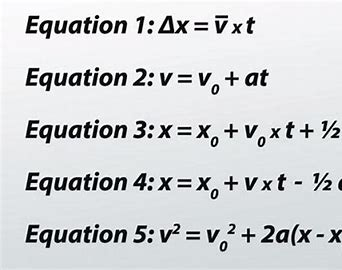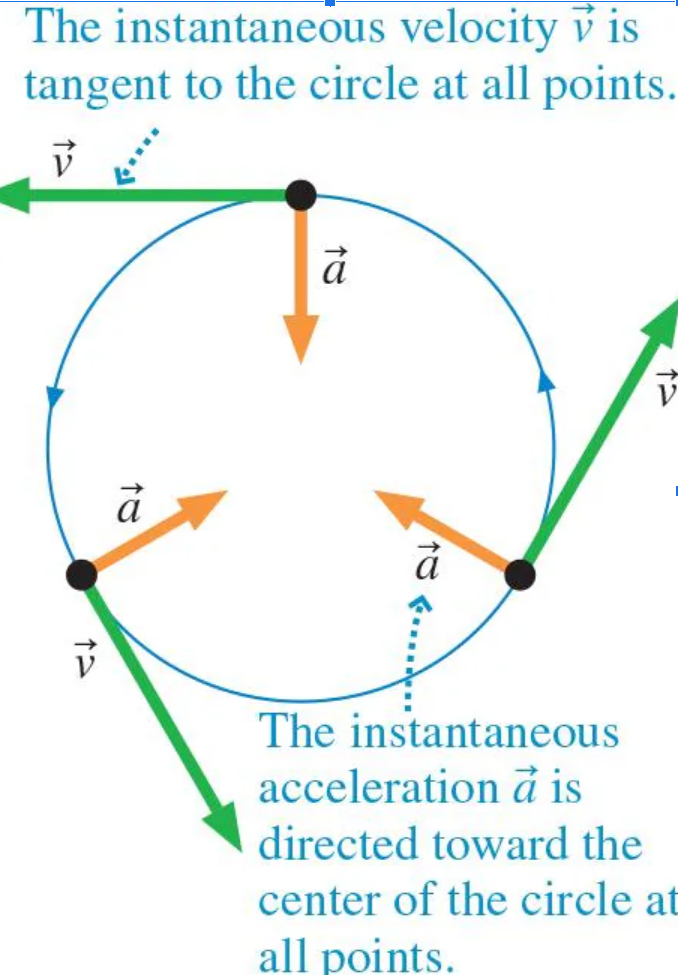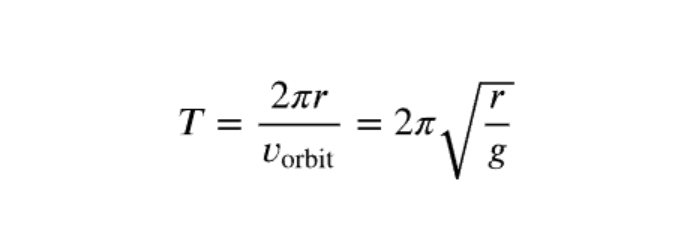ap physics 1 terms and constants
1/70
Earn XP
Description and Tags
this not saving you
Name | Mastery | Learn | Test | Matching | Spaced |
|---|
No study sessions yet.
71 Terms
scalar quantity
quantity with magnitude
vector quantity
quantity with magnitude and direction
vectors
arrows representing the magnitude and direction of a quantity
position
location of an object in space; vector quantity; measured in meters
x is horizontal, y is vertical
displacement
change in position; final - initial; vector quantity; measured in meters
speed
distance traveled in a given time/time interval; scalar; measured in meters per second
velocity
speed that takes direction into account; displacement/time interval; measured in meters per second; portrayed by the slope of a position time graph
interpreting slopes
positive means values are increasing; negative means values are decreasing; horizontal line means values are not changing
note how graphs stay at certain values above or below x axis when increasing or decreasing

acceleration
change in velocity over time; v/t; measured in meters per second squared
constant velocity = no acceleration
speeding up and slowing down
speeding up; velocity and acceleration are in the same direction
slowing down; velocity and acceleration are in opposite directions
big 5

mass
center of mass
force
tension
weight
mg; an objects weight on earth
g
-9.8; 10 on ap
normal force
friction
spring force
newton’s first law
an object in motion stays in motion unless acted upon by a force
newton’s second law
f = ma; demonstrates relationships between mass, acceleration, and force
newton’s third law
every action has an equal and opposite reaction
circular motion
motion in a circle; speed in uniform circular motion means speed is constant, but not velocity
centripetal acceleration
a = v²/r
always points towards the center of the circle

speed needed for one revolution
2pifr, circumference * f, 2pi/t
centripetal force
mv²/r
max centripetal speed
sqrt gr
apparent weight
w + centripetal force
orbital period

force of attraction

gravitational constant for a planet

orbital period and radius

kinetic energy
work
potential energy
conservation on energy
power
linear momentum
impulse
conservation of momentum
elastic collision
inelastic collision
angular displacement
angular velocity
angular acceleration
torque
parallel axis theorem
rotational equilibrium
laws in rotational form
rotational kinetic energy
rotational work
angular momentum and impulse
conservation of angular momentum
rigid body
rolling
satellite motion
SHM
Frequency
number of revolutions in a given time period
Period
the time it takes for an object to go through one cycle
Oscillators
density
m/V
density of water is 1000
measured in kg/m³
pressure
F/a or pgh
Measured in pascals
Fluids distribute force across an area
Scalar quantity
Proportional to density and object’s depth
atmospheric pressure
1.01 × 10^5 Pa or 100,000 PA
absolute pressure
Ptotal + Patm
buoyant force
F = Pfluid*Vsubmerged*g
Denser objects sink
Interferes with other forces in the same direction
Proportional to pressure
volume flow rate
volume that passes through a particular point per unit of time; in m³/s
Q = V/t or A/v
Circular pipe; pir² is area, volume of a sphere is 4/3pir³,volume of a cylinder is pir²h
Continuity Equation
A1v1 = A2v2
bernoulli’s equation
P1+pgy1+1/2pv12+P2+pgy2+1/2pv22
Streamline movement; pressure is lower when flow speed is greater
torricelli’s law
v = sqrt(2gh)